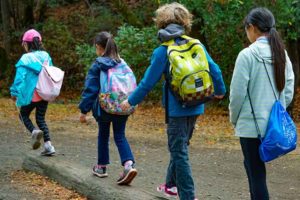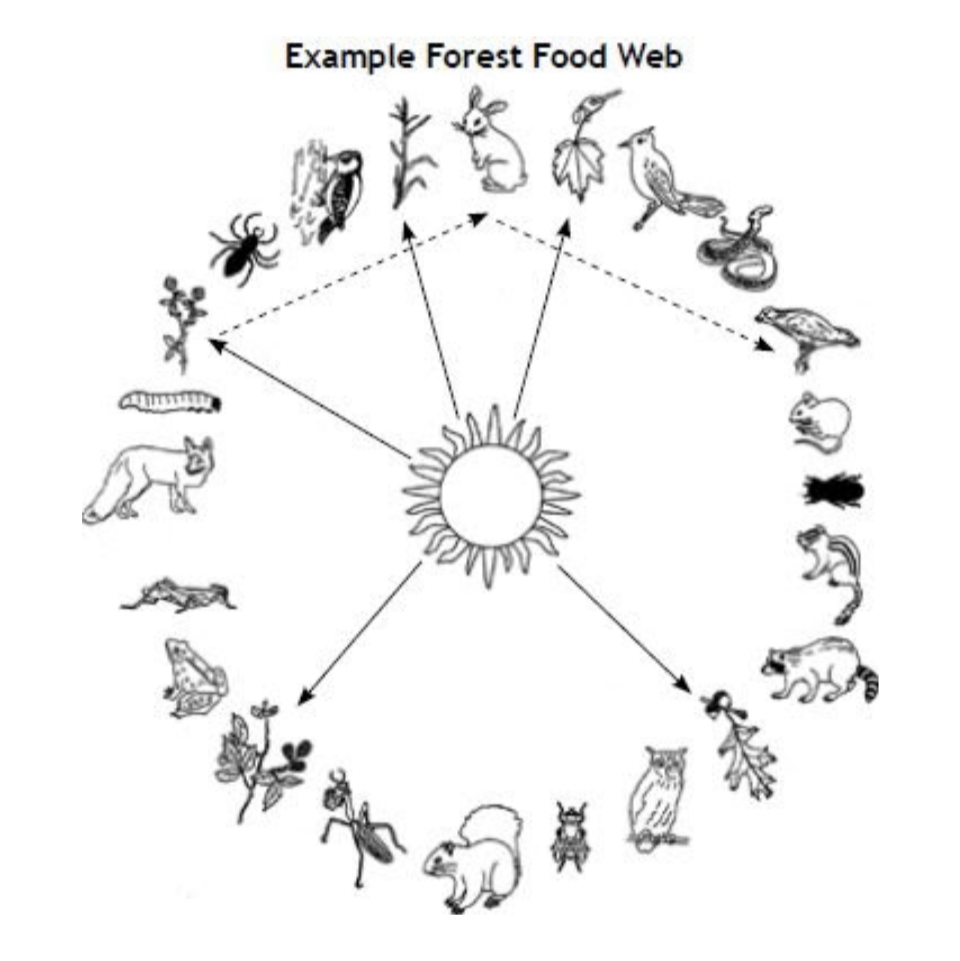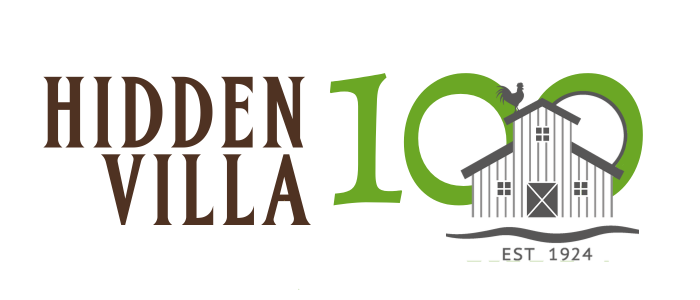
Summary:
An ecosystem is a natural system of living and non-living elements that work together. Living things, like animals and plants, are called biotic elements. They need non-living things like sun, substrate (sand, rocks and other minerals), water, and air to survive. These non-living elements are called abiotic elements.
Know-It-All
During the hike to the Knoll, Nick covers a bit about ecosystems, and a bit about what makes them work. We have provided some fun follow up questions to support your learning. Some of these questions have more than one correct answer. Keep an open mind and have fun!
- Use the following terms, introduced in the video, in a sentence or two: biotic, abiotic, and ecosystem.
2. Here are some examples of things that occur in nature, can you determine whether they are biotic, abiotic, or a combination of both? If there is a biotic and abiotic relationship happening, explain it.
- An oak tree
- A rock with fungus (like a lichen) growing in it
- Sunlight
- Water falling from a leaf
- An insect caught in a spiderweb
- An herb garden grown by your neighbor
- How do biotic and abiotic elements interact? Give three examples and describe the relationship.
- Go outside for a moment, or look out a window. What sort of abiotic resources can you see in the natural world around you?
- Animals and plants depend on each other. An organism that makes its own food (a plant, for example) is called a Producer because it “produces” food. An animal, such as a Deer, that eats what Producers make is called a Consumer. Some Consumers eat other Consumers (like a person who eats a Chicken!) Make a list of five Producers, five Consumers that eat Producers, and five Consumers that eat other Consumers.
Digging Deeper
A forest is a complex living system. While its appearance is often dominated by trees, a healthy forest is composed of many different animals and plants that interact with and depend on each other. A food chain is a simplified way of showing energy relationships between plants and animals in an ecosystem. For example, a food chain of sun, plant seed, mouse, owl shows that a plant seed that grows from the sun’s energy is eaten by a mouse, which in turn is eaten by an owl. A food web represents the interaction of many food chains in an ecosystem.
Try It
A) Here is an example of a forest food web in which five different kinds of plants are producing food by capturing the Sun’s energy (solid arrows).

Starting with the sun, can you connect the organisms into five different food chains to form a food web? One food chain has been completed for you (dotted lines). If you have colored pencils or markers, it might be fun to make the different food chains with different colors.
Hint: there are many possible combinations! When you have connected all the organisms, you have created the food web!
B) Research someone who has done something good for the environment. What did they do and why did they do it? What did you find most interesting about them?
C) Write a story from the point of view of an abiotic (non-living) thing, like a rock or the Sun or the wind or a raindrop. What does it experience? Does it go on an adventure? How does it help the living creatures around it? Use at least six sentences to tell your story.
Print out the guide by downloading the PDF
